#H1N1
Text
Long flu: Like long Covid, influenza can also lead to lingering symptoms
#covid#long covid#flu#pots#mecfs#me/cfs#immune system damage#immune dysfunction#autoimmine disease#swine flu#h1n1
18 notes
·
View notes
Text
El Reino Unido ha confirmado el primer caso de gripe porcina en humanos, cuando dos individuos dieron positivo en una prueba de rutina.
6 notes
·
View notes
Text

Swine flu: Bacon's revenge
15 notes
·
View notes
Text

Do you know how many 'The World is Going to End" events I've survived? And a couple that I couldn't list because they're still #classified.
36 notes
·
View notes
Text
Guys I feel like my head is literally exploding, I feel so miserable. Help what do I do I already took meds
1 note
·
View note
Text
Texas: CDC warns about transmission of H5N1 bird flu from cow to human
#lifestyle#motivation#fitness#health#healthylifestyle#wellness#healthy#nutrition#fitnessmotivation#flu#virus#healthcare#healthyliving#selfcare#life#birdflu#h1n1
0 notes
Text
H1N1 Kabusu: İspanyol Gribi ve Dünya Çapındaki Yıkım
Birinci Dünya Savaşı’nın gölgesinde, tarihin en yıkıcı salgınlarından biri olarak kayıtlara geçen İspanyol Gribi, 1918-1920 yılları arasında H1N1 virüsünün ölümcül bir alt türü tarafından tetiklendi. Bu pandemi, dünya genelinde 500 milyondan fazla kişiyi etkileyerek, 18 ay içinde dehşet verici bir şekilde 50 milyon insanın hayatını kaybetmesine neden oldu.
Salgın, ılımlı bir başlangıç dalgası,…
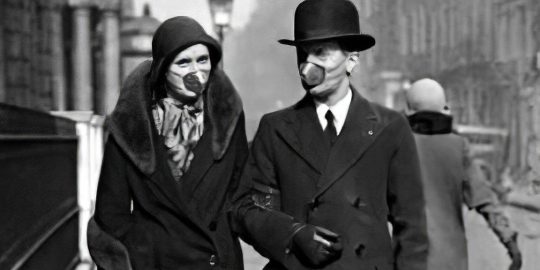
View On WordPress
0 notes
Text
Full immersion is getting sick with H1N1 flu while studying post-WWI.
0 notes
Text
Máscara PFF2 tipo N95 Proteção, Gripe H1N1, Coronavírus, Tuberculose Sem Válvula Cor Azul
Máscara PFF2 tipo N95 Proteção, Gripe H1N1, Coronavírus, Tuberculose Sem Válvula
Descrição
Respirador semifacial descartável, classe PFF2 (s), modelo dobrável, com válvula de exalação, formado por filtro com tratamento eletrostático, TNT na parte interna, clip nasal interno em metal revestido de plástico que facilita a vedação e elásticos de látex com regulador. Oferece proteção contra poeiras, névoas Gripes e vírus.
- Clipe nasal que facilita a vedação e eficiência do respirador
- Elásticos que proporcionam melhor ajuste
- Formato dobrável: fácil de armazenar
- Válvula de exalação de alta performance
Detalhes PFF2 P2 x N95 - são as mesmas, somente NOMES diferentes, confira nesse link: http://blog.volkdobrasil.com.br/noticias/o-que-e-respirador-n95
Read the full article
#bactéria#china#corona#corona-virus#coronacirus#gripe#gripeaviaria#gripecorona#gripesuina#h1n1#h5n1#suino#tuberculose#virus
0 notes
Text
Did anyone have the swine flu making a come back on their bingo card?
#apparently its the flu i had in November#feels exactly like covid but is not covid#h1n1#swine flu 2023
0 notes
Text
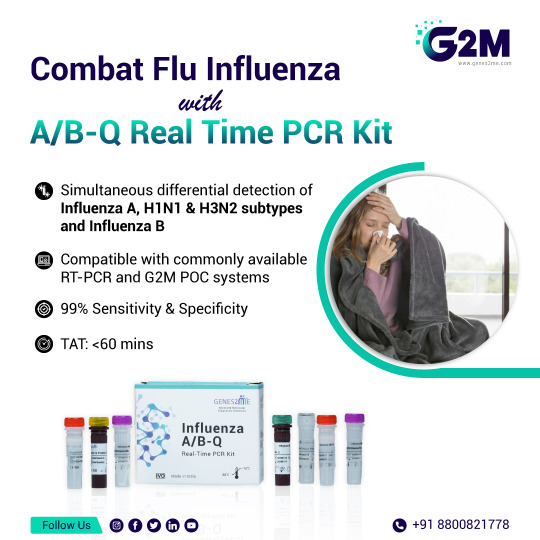
#Influenza (flu) is a transmitted respiratory #disease caused by influenza viruses that infect #respiratory tract and lungs. The onset of flu symptoms are usually acute and characterized by fever, chills, headache, fatigue, sore throat and dry cough. #Genes2Me offers Influenza A/B-Q (H1N1 & H3N2) Real Time #PCR Multiplex kit for simultaneous detection & differentiation of #InfluenzaA, #InfluenzaB & Influenza A sub-types #H1N1 & #H3N2 virus specific #RNA along with Internal control.
Visit our website for more information. https://www.genes2me.com/ivd-real-time-pcr-test-kits/respiratory-disease-diagnostic-kit
For more details, Call us at +91-8800821778 or drop us an email at [email protected]
#g2m #rtpcr #detection #ivd #kits #madeinindia #molecular #diagnostics #fever #cough #cold #moleculardiagnostics #moleculardiagnosticslab #risk #testing #testingsolutions
#influenza#influenzaA#influenzaB#rt-pcr kits#g2m#genes2me#h1n1#h3n2#rna solutions#dna solutions#testing kit#diagnostics solutions#made in India#molecular biology
0 notes
Text
Angelo LanFranchi, the H1N1 flu pandemic, and the granite mines
In my last post on this blog, I posed a theory that my ancestor, Angelo LanFranchi, immigrated to the U.S. in an effort to avoid the draft in the then-Kingdom of Italy. Since I can't (and won't) request the original documents from the State Archives of Parma, which has a series titled "Leva Militare," meaning "military draft," with a 209 pages of records from the Parma Draft office (1883-1915) due to COVID-19, there is something that I am apt to write during these times: a story about my ancestors and the H1N1 flu pandemic, incorrectly named the "Spanish flu," which lasted from 1918 to 1920. I would like to focus mainly on Angelo LanFranchi in hopes of answering why he moved, in 1918, from Barre to Avonmore, something which some of my cousins wouldn't answer because they weren't sure of the answer themselves, something which is no fault of their own.
Originally published on Apr. 16, 2020, on the WordPress version of this blog, in the early days of the COVID-19 pandemic (in the U.S.), as the first deaths occurred in the U.S. in February and a national emergency was not declared until March.
As I noted on my last post, Angelo was born in Casola, Parma, in northern Italy, on September 6, 1896, and he came first to Avonmore in 1914 from Italy, where his sisters Barbara and Angelina were living. But, I didn't tell the other part of the story. Angelo then moved to Barre, Vermont, where he worked as a stone mason, also known as a stone cutter, from at least 1915-1918. [1] He was living at 408 North Main Street with his sister, Marietta "Marie", and his brother-in-law (and Marietta's husband), Giuseppe Berte. Like Angelo, Giuseppe also worked as a stone mason, working for the Kelly Brothers, [2] while his brother, Dino, also lived in the city, working for the Chioldi Brothers, on 308 North Main Street. [3] I'll focus on Dino, Giuseppe, and the others in another post, here is a photograph of where Giuseppe, Marie, and Angelo lived in Barre, a location which is still standing to this day:

While living there, Giuseppe and Marie, who had married sometime before September 1912, would have three children: Lina (b. 1915), Ketri (b. 1913) and Ancilla (b. 1918) as shown in this 1919 photograph below. Lina is on the left side of the picture, Ancilla is in the middle, and Ketri is in the right side of the picture.
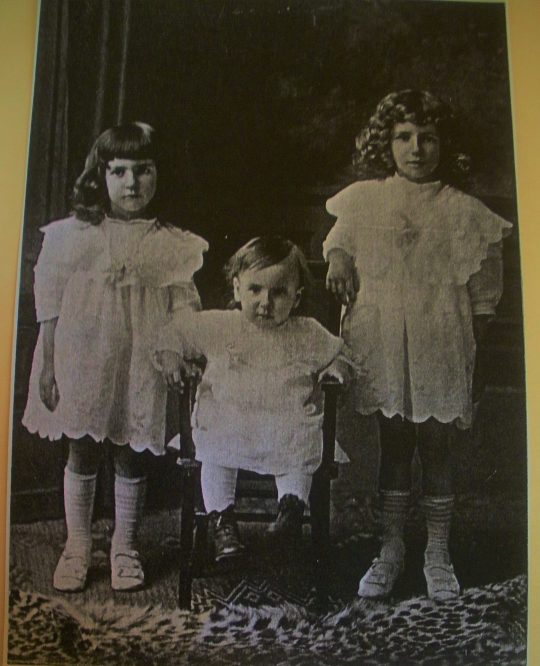
In later years, Giuseppe would be a bearer for his sister Ermalinda Berte, at her funeral, as would his brother Dino. He would be living in Barre, Vermont with his wife and two children, saying he needed he needed to stay there for "family support" rather than fight in Europe. [4] He noted, as an interesting aside to my last post, that he previously fought in the Italian military. Although Giuseppe, Marie, and their family, stayed put in Barre for a few more years, why did Angelo leave? The family story that he left because of dust in the stone mines, which is still a possibility, as a reason he came to Western Pennsylvania. After all, in 2000, the U.S. Department of Health and Human Services concluded that " tiny crystalline rock particles found in granite dust can cause lung cancer," while OSHA has stated that workers who "inhale very small crystalline silica particles are at risk for silicosis – an incurable, progressively disabling and sometimes fatal lung disease." This is likely what Angelo was worried about, although they didn't have a term for that then.
As for the H1N1 flu pandemic, we know it first cropped up in Vermont in late September 1918, hard hitting the state capital of Montpelier and the city of Barre over the next few months. [5] The crisis peaked from October 15-30, with medical authorities lifting the statewide ban on public gatherings on November 8. This severe pandemic quickly spread across the country, with 50,000 Vermonters sickened by the virus and over 2,100 dying from its complications. One group were affected, group apart from any other: granite workers, whose lungs were already weakened by silicosis, and industries were shut down, [6] with towns cancelling gatherings and meetings, travel in and out of Vermont banned on October 4. [7] As the pandemic, then called the "grippe," leveled out by late 1919, it had torn through the population "like a grassfire." It often struck without warning, whether running its course over three weeks for some and killing others in three days or less! Many years later, a granite monument was constructed in Barre's Hope Cemetery to commemorate those that died from the influenza. Ultimately, the flu would affect over 25 percent of the U.S. population, with the average life expectancy in the United States dropped by 12 years as noted by the National Archives.
Due to the fact that infection from the influenza was only reported "after the pandemic began," reliable data is unavailable currently, meaning that the brevity of the pandemic has to be determined using other information instead. We do know, however, that this pandemic was unique because it killed "many healthy 20- to 40-year-olds," while those who usually due of the flu are under five or over age 75, with those born in the years around 1889 most vulnerable. Like the current crisis, those who died directly or indirectly from the disease were under-reported, but for a different reason: to support pro-war propaganda during the U.S. war with Germany (World War I) under the Sedition Act of 1918, which prohibited any "disloyal, profane, scurrilous, or abusive language"about the U.S. armed forces, U.S. government, flag, or anything else deemed "un-patriotic." While the origin of the H1N1 pandemic continues to be hotly debated, there is no question that the virus was a virulent one, from which most patients recovering after having a 3-5 day fever, although those affected were often worn down by the flu which attacked the lungs, caused terrible pains, delirium, high fever, and nausea, with people often dying from pneumonia. This unique virus hit New England hard, killing thousands, including 9,500 in the state of New York alone. While it is hard to know if Avonmore was like the communities across the U.S. that escaped the H1N1 virus, such as Fletcher, Vermont, the state of Pennsylvania was hard hit, especially Philadelphia. [8] Pittsburgh, only 33 and 1/2 miles from Avonmore, as the crow flies, originally dismissed mild cases of the disease, first reported by local papers on October 1, with hundreds of cases of influenza within a couple days, trying to take strains off hospitals by asking for people to care for the sick at home. There were over 4,400 cases by October 16, jumping to over 7,500 only a few days later. As the article on the Influenza Encyclopedia, put together by the University of Michigan Center for the History of Medicine and University of Michigan Library, gives some further notes about the state of the population:
By late-October, Pittsburgh residents were starting to get anxious over when the closure orders and gathering ban might be lifted. Saloon owners and wholesale liquor distributors were particularly eager to have state Health Commissioner Royer rescind his orders...Although Babcock failed in his attempt to have the bans lifted immediately, Royer offered hope they would be lifted in Allegheny County shortly so long as the infection rate continued to decline...Taking Batt’s report into consideration, on November 1 Royer announced that Pittsburgh might be allowed to reopen its places of amusement as early as November 4. Residents, and especially affected business owners, sighed in collective relief. Overnight, Pittsburgh’s great expectations were dashed when Royer abruptly announced that Pittsburgh would not be allowed to reopen until November 9...An industrial powerhouse with a large population, Royer dared not try to isolate the Steel City, especially during wartime. Instead, he issued a statement condemning the city’s actions as an invitation to lawlessness and disorder...Ultimately, Royer held true to his promise to lift the state-ordered bans on November 9...Other than these restrictions, Pittsburgh was once again free to return to life as usual [by late November]...Pittsburgh continued to experience cases of influenza and pneumonia throughout the rest of the winter...Overall, Pittsburgh experienced the worst epidemic of any major city in the United States. The average death rate for Eastern cities was 555 per 100,000. By contrast, Pittsburgh’s excess death rate was a whopping 807 per 100,000 people. The Steel City’s ordeal with influenza was even deadlier than that of Philadelphia (748) or Boston (710), two communities where influenza ran rampant in the fall of 1918. Despite advance warning and preparation, organized local leadership, and efficient allocation of resources, Pittsburgh fared horribly during the crisis...It is also possible that Pittsburgh’s high death rate was in part due to the city’s notoriously poor air quality during the time...Combined with the delay in closing schools, Pittsburgh’s pollution may have contributed to the severity of its bout with influenza in 1918.
That brings us to the question about my ancestor, Angelo. I need not read an epidemiologic study or survey of the of the influenza to ask if this crisis affected him. The below draft card, dated June 5, 1918, lists his address as "Waterman Box 54 PA," birthplace as Parma, employer is J & C.C & J Co. in Waterman, Indiana County, Pennsylvania. He also lists his nearest relative as is mother, Adelaide in Casola, Parma, Italy, and is noted as not currently a US citizen. [9]

This record means that Angelo did not flee Barre to move to Avonmore, immediately, at least, with Waterman about 24 miles away from the town. While the CDC's timeline for the H1N1 influenza notes that in March, "outbreaks of flu-like illness are first detected in the United States," spreading sporadically across the U.S., Asia, and Europe over the six months to follow. It also notes that a second wave hit the U.S. between September and November, which was "highly fatal, and responsible for most of the deaths attributed to the pandemic." In the spring and winter of 1919, there was a third wave of influenza which kills may others, subsiding in the summer. For Pennsylvania, it first began to take root in the state in September 1918, and as the PA Department of Health noted,
Unlike seasonal flu, which mostly threatens the health of the very young and elderly, the Spanish Flu caused serious illness and death in otherwise young, healthy people...The Spanish Flu pandemic affected almost every part of American society. With one-quarter of the US infected, it was impossible to escape from the illness. As the disease spread, schools and businesses emptied. Telephone, mail, and garbage collection services stopped as workers became ill and could not do their jobs.
Furthermore, from October 1918 onward, the flu roared through Western Pennsylvania, sickening tens of thousands in Allegheny and Westmoreland County, with 2,000 dying in Westmoreland County alone. [10] Since Avonmore sits on the edge of Westmoreland County, Angelo was lucky he didn't die from the flu, part of one of the many families in the state which were affected by the pandemic, with the context of how your ancestors survived the pandemic likely described in newspaper accounts.
While there are, sadly, no original records of noting how Angelo, his immediate or extended family, dealt with the pandemic and their thoughts at the time, there is no doubt that it affected him and those nearby in ways that he probably couldn't imagine. In order to understand, fully, why Angelo ended up in Avonmore, its important to first look back at what was happening in Barre, involving the Bertes, Chioldis, and many other interconnected families, which will be focus of either the next or an upcoming post on this blog.
© 2020-2023 Burkely Hermann. All rights reserved.
Notes
[1] Ancestry.com. U.S. City Directories, 1822-1995 [database on-line]. Provo, UT, USA: Ancestry.com Operations, Inc., 2011. Barre, Vermont, City Directory, 1917, p. 92; Ancestry.com. U.S. City Directories, 1822-1995 [database on-line]. Provo, UT, USA: Ancestry.com Operations, Inc., 2011. Barre, Vermont, City Directory, 1916, p. 92; Ancestry.com. U.S. City Directories, 1822-1995 [database on-line]. Provo, UT, USA: Ancestry.com Operations, Inc., 2011. Barre, Vermont, City Directory, 1915, p. 94; Ancestry.com. U.S. City Directories, 1822-1995 [database on-line]. Provo, UT, USA: Ancestry.com Operations, Inc., 2011. Barre, Vermont, City Directory, 1918, p. 107; Ancestry.com. U.S. City Directories, 1822-1995 [database on-line]. Provo, UT, USA: Ancestry.com Operations, Inc., 2011. Barre, Vermont, City Directory, 1914, p. 93. The 1914 city directory does not list him, but could either because he arrived early in 1914 and the city directory is issued early that year, or because he wasn't living in Barre until 1915. In all of these records, he is listed as "Lanfranchi, Angelo." His January 13, 1915 Declaration of Intention to becoming a U.S. citizen rightly describes some of his particulars (five foot 7, blue eyes, brown hair, 160 pounds, born in Parma, Italy) and the ship he came on are correct, but it incorrectly states he was living at 405 North Main Street in Barre, when he actually only lived at 408 Main Street during his time in the city.
[2] Ancestry.com. U.S. City Directories, 1822-1995 [database on-line]. Provo, UT, USA: Ancestry.com Operations, Inc., 2011. Barre, Vermont, City Directory, 1916, p. 41, 230-231
[3] Ancestry.com. U.S. City Directories, 1822-1995 [database on-line]. Provo, UT, USA: Ancestry.com Operations, Inc., 2011. Barre, Vermont, City Directory, 1915, p. 36.
[4] Registration State: Vermont; Registration County: Washington; Roll: 1984100 Source Information Ancestry.com. U.S., World War I Draft Registration Cards, 1917-1918 [database on-line]. Provo, UT, USA: Ancestry.com Operations Inc, 2005. Original data: United States, Selective Service System. World War I Selective Service System Draft Registration Cards, 1917-1918. Washington, D.C.: National Archives and Records Administration. M1509, 4,582 rolls. Imaged from Family History Library microfilm.
[5] Feeney, Vincent. “Spanish Flu Hit Vermont Hard in 1918.” Burlington Free Press. September 18, 2015. https://www.burlingtonfreepress.com/story/news/local/2015/09/18/spanish-flu-vermont-1918/32561715/; Bushnell, Mark. "Then Again: In an age before antibiotics, a killer epidemic struck Vermont." Vermont Digger. March 8, 2020. https://vtdigger.org/2020/03/08/then-again-in-an-age-before-antibiotics-a-killer-epidemic-struck-vermont/; “History of 1918 Flu Pandemic.” Centers for Disease Control and Prevention. U.S. Department of Health and Human Services, March 21, 2018. https://www.cdc.gov/flu/pandemic-resources/1918-commemoration/1918-pandemic-history.htm; "Pandemic flu preparedness." Vermont Department of Health. State Government of Vermont, January 22, 2020. https://www.healthvermont.gov/immunizations-infectious-disease/influenza/pandemic-preparedness.
[6] Frederick, Keith. “Workforce Continuity During a Pandemic: Is Your Business Ready?” Disaster Recovery Journal, February 6, 2020. https://drj.com/journal/workforce-continuity-during-a-pandemic-is-your-business-ready/. As the Disaster Recovery Journal notes, "during a pandemic, absenteeism rates can climb to as high as 20-50 percent due to employee illness, caring for sick family members, fear of contagion, or lack of medical, public, or transportation resources." Although this is referring to what could happen in the present, back in 1918, the absenteeism rates were likely higher.
[7] Feeney, Vincent. “Spanish Flu Hit Vermont Hard in 1918.” Burlington Free Press. September 18, 2015. https://www.burlingtonfreepress.com/story/news/local/2015/09/18/spanish-flu-vermont-1918/32561715/; Viglienzoni, Cat. "Terrible times: Remembering the 1918 flu pandemic's impact on Vermont." WCAX3. March 27, 2020. https://www.wcax.com/content/news/Terrible-times-Remembering-the-1918-flu-pandemics-impact-on-Vermont-569164611.html; Picard, Ken. "Recalling the Flu Pandemic of 1918." Seven Days Vermont. February 28, 2018. https://www.sevendaysvt.com/vermont/recalling-the-flu-pandemic-of-1918/Content?oid=13143570; Thibault, Amanda. "This Place in History: 1918 Flu Pandemic." mychamplainvalley.com. November 15, 2018. https://www.mychamplainvalley.com/news/this-place-in-history-1918-flu-pandemic/; Brundage, John F., and G. Dennis Shanks. “What Really Happened during the 1918 Influenza Pandemic? The Importance of Bacterial Secondary Infections.” The Journal of Infectious Diseases 196, no. 11 (December 1, 2007). https://doi.org/10.1086/522355. The Feeney post is an excerpt from his book "Burlington: A History of Vermont's Queen City."
[8] Gray, Richard. "The places that escaped the Spanish flu." BBC News. October 24, 2018. https://www.bbc.com/future/article/20181023-the-places-that-escaped-the-spanish-flu; Almond, Douglas. “Is the 1918 Influenza Pandemic Over? Long‐Term Effects of In Utero Influenza Exposure in the Post‐1940 U.S. Population.” Journal of Political Economy 114, no. 14 (August 2006). https://www.journals.uchicago.edu/doi/10.1086/507154.
[9] Pennsylvania; Registration County: Indiana; Roll: 1893240; Draft Board: 2; Ancestry.com. U.S., World War I Draft Registration Cards, 1917-1918 [database on-line]. Provo, UT, USA: Ancestry.com Operations Inc, 2005; United States, Selective Service System. World War I Selective Service System Draft Registration Cards, 1917-1918. Washington, D.C.: National Archives and Records Administration. M1509, 4,582 rolls. Imaged from Family History Library microfilm.
[10] One local historian, Thomas Soltis, even wrote a 23-page bound book titled "The 1918 Influenza Pandemic," published by the Westmoreland Historical Society. There is also a slightly cheaper digital copy.
#angelo lanfranchi#louis franci#lanfranchi#franci#lanfranchis#francis#draft#selective service#parma#italy#h1n1#covid pandemic#pandemic#avonmore#barre#casola#giuseppe berte#marietta lanfranchi#photographs#granite mines#children#wordpress#granite dust#sickness#vermonter#life expectancy#national archives#tw death#tw sickness#waterman pa
0 notes
Text
Oleadas de muertes post inyecciones
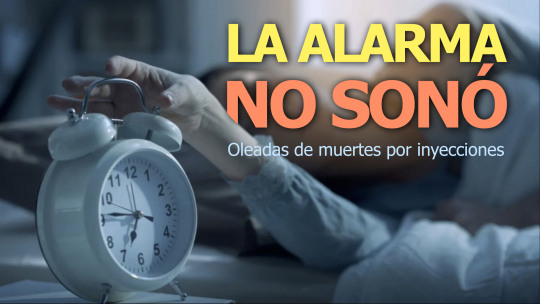
Oleadas de muertes post inyecciones 22/03/23
Estimados miembros de Akasha Comunidad:
Los sistemas de monitoreo de eventos adversos posiblemente relacionados con las inoculaciones son muy útiles - su intención es servir, justamente, de sistema de monitoreo de patrones. Claro, para que algo sea útil, se necesita usar de acuerdo a sus instrucciones y propósito. Un despertador es útil para despertarnos en la mañana, pero solo si le hacemos caso. Si, en vez de eso, le damos un golpe o lo aventamos y apagamos su alarma, seguiremos durmiendo plácidamente, probablemente llegando tarde a las actividades para las que habíamos programado despertar temprano. Eso no será culpa del despertador, sino de nosotros, ¿no les parece?
Entonces, los sistemas de monitoreo solo sirven si hacemos caso a su señal de alarma. En otros años, esas señales de alarma de los sistemas de monitoreo han sonado y han sido escuchadas: por ejemplo, en 1976, durante la vacunación contra influenza H1N1, se registraron 53 muertes 'posiblemente asociadas con las vacunas' (es decir, personas que murieron después de ser inoculadas, sin que hubiera otros motivos que explicasen su muerte) y se detuvo la campaña de vacunación. Con la vacuna contra la polio, en la década de los cincuentas en el siglo pasado, fue incluso más notorio: con 10 muertes acaecidas, suspendieron la vacunación.
Ahora, con la humanidad 'avanzada', 'civilizada' y tan 'llena de conocimiento y tecnología' del Siglo XXI, tan solo en VAERS (el sistema Estadounidense de monitoreo de eventos adversos) se han registrado al 10 de marzo de 2023, 34,725 muertes posiblemente asociadas a las inyecciones anti-COVID (https://openvaers.com/covid-data).
¡En un periodo de 27 meses se han registrado 655 veces más muertes que las asociadas con las vacunas contra influenza en 1976! Y, ¿cuál ha sido la respuesta? Pues, nada en realidad... le han dado un golpe al despertador y han seguido dormidos... inoculando a la gente que aún les cree o que aún tienen mucho miedo.
El problema con esas 34,725 muertes posiblemente asociadas a las inoculaciones es que es una subestimación tremenda. No solamente porque no se reportan todos los casos, sino porque solamente toma en cuenta lo que ocurre en los 28 días posteriores a recibir una inoculación, y eso si nos va bien... de hecho normalmente se toman en cuenta los eventos que ocurren siete días después de recibir dicho producto (https://www.ncbi.nlm.nih.gov/pmc/articles/PMC8539830/). Y ¿ese numerito mágico de 28 días, de dónde sale? No responderé aquí lo que me vino a la mente como respuesta, porque no me gusta ser soez, pero creo que en este caso, sí, de ahí salió. El problema es que 28 días de monitoreo no tiene fundamento alguno, y menos cuando se trata de productos nuevos, basados en terapia génica, con potencial de ocasionar problemas de inmunosupresión, autoinflamación, autoinmunidad y malignización (ver https://pubmed.ncbi.nlm.nih.gov/36718314/), con efectos que son improbables de ser manifestados dentro de 28 días, sino mucho después. Claro, si solamente tomo en cuenta lo que pasa en 28 días, pues, por decreto divino (supongo), entonces todo lo que pase después ya no lo asocio a las inoculaciones, ¿no? Veo por qué esta lógica sería de utilidad a las farmacéuticas, que desean seguir amasando una fortuna, pero, ¿y los reguladores?, ¿y los médicos?, ¿y las autoridades sanitarias? ¿Tan corrompidas están ya que no les importa la seguridad de sus ciudadanos?
Y, ¿qué evidencia conozco para decir eso? - pensarán algunos. ¡Uf! Mucha evidencia.
Por ejemplo, los datos (https://www.ons.gov.uk/peoplepopulationandcommunity/birthsdeathsandmarriages/deaths/datasets/deathsbyvaccinationstatusengland) del mismísimo gobierno del Reino Unido en donde se ve que, al pasar el tiempo de haberse inoculado, incrementa la tasa de mortalidad. De acuerdo a esos datos oficiales, las personas que recibieron una inyección anti-COVID incrementaban, mes con mes, su riesgo de morir, en 290% un mes después de haberla recibido, en 413% el siguiente mes, en 389% el siguiente mes, etc. Es decir, el riesgo de morir incrementa conforme pasa el tiempo de haber sido inyectado. Conocí estos datos gracias a Craig Pardekooper, y he reanalizado los datos más extensamente para el diálogo del viernes (ver https://t.me/akashacomunidad/2562). Les adelanto que mientras que para los no-inoculados no incrementa la tasa de mortalidad, en los inoculados sí (ver figura).

Los mecanismos que pueden explicar el comportamiento de los datos ya se ha abordado muchas veces en este canal y en seminarios, así que no los repetiré aquí. Sin embargo, lo que me parece muy importante de precisar es que, como pueden ver, las muertes no se limitan a los 28 días post-inoculación, sino que se ven en oleadas.
Tal vez sea justamente esto lo que explica en su reporte Rodrigo Ambrocio (documento anexo), que muestra datos de 104 médicos y jóvenes fallecidos en Guatemala desde el inicio de la campaña de inoculación COVID-19 (datos actualizados hasta el 2 de marzo, 2023), y donde se ve que hay asociaciones temporales en oleadas, concordando con lo observado en otros países. Ver vídeo en: https://rumble.com/v2dx1b4-muerte-programada-vacunas-covid-informe-final-guatemala.html
¿Seguirán los médicos - algunos dentistas - y autoridades clamando la seguridad de estos productos? ¿En qué evidencia se basan. me pregunto? Yo no ignoro el que existen muchos estudios que demuestran que en 7 días, o en 14 días, o en 2 meses no hay 'señal de falta de seguridad'. Eso es lo que pueden decir dichos estudios (no pueden, como pretenden, decir que sus resultados son 'evidencia de que estas inyecciones no tienen problemas de seguridad', solamente pueden decir que con los criterios usados, y en el lapso de tiempo evaluado, no encontraron estos problemas. Pero, ¿por qué se empeñan otros en ignorar la evidencia, como la aquí presentada, que muestra problemas evidentes de seguridad?
A estas alturas del partido me parece que hablar de 'eventos adversos' ya queda corto. Estos productos están - intencionalmente o no - matando a mucha gente.
¡Ya basta! Por favor; ¡ya basta!
Espero que sea de su utilidad esta información y les mando saludos, Karina AW.
#sistemas de monitoreo#eventos adversos#señal de alarma#vacunación#H1N1#53 muertes#vacuna polio#10 muertes#suspender vacunación#VAERS#inoculaciones#patrones#27 meses#monitoreo#terapia génica#oleadas de muertes#problemas#inmunosupresión#autoinflamación#autoinmunidad#malignización#farmacéuticas#reguladores#médicos#autoridades sanitarias#seguridad#evidencia#tasa de mortalidad#riesgo de morir#señal de falta de seguridad
0 notes
Link
#parana #vacina #gripe #imunizaja #h1n1 #campanha #saude #noticias #news
0 notes
Link
#BillGates#GeschichtenausWikihausen#H1N1#Impfen#Impfstoff#Impfstoffe#Impfung#JuliusSenegal#MarkusFiedler#Nebenwirkung#Nebenwirkungen#Pandemrix#Schweinegrippe#Spiegel#Wikihausen#WIkihausen41
0 notes
Text
Blíží se lockdown? Jižní Čína kvůli chřipce zavírá školy
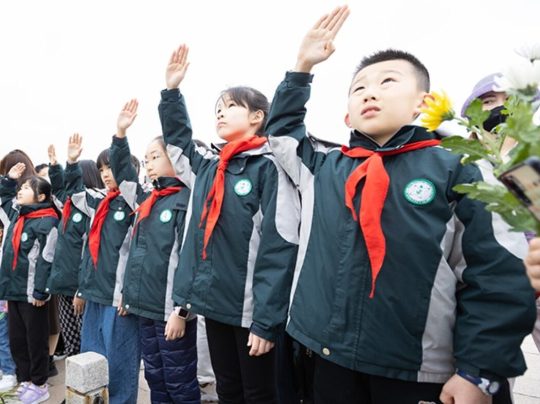

Školy v jihočínské provincii Kuang-tung ve čtvrtek pozastavily vyučování kvůli vypuknutí chřipky, což je nepříjemná připomínka trestuhodných omezení, která byla použita po celé zemi během pandemie koronaviru ve Wu-chanu.
Představitelé Kuang-tungu trvali na tom, že nárůst chřipky byl sezónní událostí, kterou pravděpodobně zhoršilo vlhké počasí a znovuobjevení dlouho spící chřipky.
Several schools in Guangdong suspend class over "high prevalence of influenza" - Global Timeshttps://t.co/yxS6NwaEIV
— Kerry Allen 凯丽 (@kerrya11en) April 6, 2023
Čínský státní deník Global Times vylíčil vlnu případů chřipky H1N1 v Kuang-tungu jako poněkud překvapivý nárůst v jinak předvídatelné jarní sezóně. H1N1 je od vypuknutí koronaviru ve Wu-chanu poměrně neobvyklým kmenem chřipky, takže regionální zdravotnické úřady si myslí, že populaci Kuang-tungu se proti této variantě snížila imunita.
„Školy, školky a pečovatelské domy jsou klíčovými místy pro sledování případů chřipky. Některé školy v reakci na to pozastavily výuku na čtyři dny v souladu s monitorováním zdraví,“ uvedli zdravotničtí představitelé ve městě Zhuhai v Kuang-tungu.

Foto: Studenti základních škol se seřadili na hřišti pro testování nukleových kyselin v Anyangu, provincie Henan, Čína, 8. listopadu 2022. (Print Screen z breitbart.com)
Podle Global Times si rodiče stěžovali na rostoucí počet studentů, kteří ve škole onemocněli, včetně některých, kteří si vyžádali hospitalizaci. Jedna nemocnice v Kuang-tungu uvedla, že denně zaznamená přes 400 dětských pacientů, což je asi čtyřnásobek obvyklého počtu případů.
Čínský list citoval vládní zprávy, podle kterých se počet případů chřipky v jižních provinciích již zpomaluje, ale školy byly preventivně na čtyři dny uzavřeny.
Čínská komunistická strana tvrdošíjně trvala na tom, že celoměstské lockdowny, politika přímo přisuzovaná diktátorovi Si Ťin-pchingovi, byly účinné a bude v nich pokračovat na dobu neurčitou – od doby karantény v prosinci po masivních celonárodních protestech, kdy bylo od lockdownů upuštěno. Minulý měsíc však začala komunistická strana vysílat nevýrazné signály čínským průmyslníkům i zahraničním investorům, že se o lockdowny už nikdy nepokusí.
Překlad: Martin Kirschner (www.vipnoviny.cz), Zdroj: breitbart.com
Read the full article
0 notes